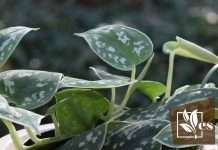Petunias are a vibrant and popular choice for gardeners looking to add a splash of color to their garden or home. These flowers, with their wide range of hues and patterns, are typically easy to care for, but they can suffer from overwatering—a common issue that can lead to problems such as root rot. Recognizing the signs of overwatering in petunias is crucial to save these appealing plants from irreversible damage.

In my experience, petunias flourish in well-draining potting mix, ideally tailored to provide the right balance of air and moisture. The key to successful petunia care lies in understanding the particular water needs of these plants, which can vary depending on the climate and the environment they are grown in. Overwatering can occur not just from too frequent watering, but also from heavy rains or poor soil conditions that prevent water from draining properly.
To prevent overwatering, ensure that your petunias are planted in a location with good drainage and are watered only when the top inch of the soil feels dry to the touch.
JUMP TO TOPIC
Identifying Overwatering in Petunias
In my experience, petunias are particularly susceptible to overwatering, which can manifest in various distressing symptoms. Recognizing these signs early is crucial for the plant’s recovery.
Signs of Overwatered Petunias
Diagnosing Root Rot and Soil Issues
When diagnosing root rot, carefully remove the petunia from its pot to inspect the roots. Healthy roots should be firm and white, while rotted roots appear brown or black and feel mushy. Soil should be moist but not soggy. If there’s a foul odor or you notice moldy soil, it’s a clear indicator that the soil has been waterlogged and compaction may be occurring, preventing proper drainage.
Good drainage practices involve the use of pots with drainage holes and possibly elevating the container to facilitate water flow.
Perfecting Watering Practices for Petunias
In my experience, the key to healthy petunias lies in mastering the watering technique. Proper hydration ensures lush blooms while preventing issues like root rot and wilt.
Establishing a Proper Watering Schedule
I’ve learned that petunias thrive on consistency. Generally, a watering schedule should reflect the balance between soil moisture levels and the plant’s natural growth cycle. This schedule will vary depending on the environment and the stage of growth, but as a rule of thumb, water when the top inch of soil feels dry to the touch.
- Once or twice a week during moderate temperatures.
- Increase frequency during hot, dry weather.
- Reduce when overcast or rainy.
A well-draining soil is paramount to avoid waterlogged roots. I always make sure that containers have drainage holes and that the garden bed is not compacted.
Adjusting Watering Based on Weather and Climate
Petunias demand more attention when the weather plays its tricks. During periods of intense sun and heat, I increase watering to combat the stress on my petunias, providing them with relief from direct sunlight. Conversely, during cool, cloudy spells, they require less.
💥 Key Weather Considerations:
| Weather Condition | Adjustment |
|---|---|
| Hot, Dry | Increase watering frequency. |
| Cool, Overcast | Decrease watering frequency. |
| High Humidity | Monitor soil moisture closely before watering. |
To stay on top of watering practices for these beloved houseplants, I remain vigilant to changes in weather and climate, adjusting my watering schedule accordingly to ensure the petunias are neither overwatered nor underwatered.
Revival Techniques for Overwatered Petunias
When our beloved petunias are overwatered, it’s vital to take swift action to save them. This involves scrutinizing the root system, amending soil, ensuring proper drainage, and pruning damaged foliage. Here, I’ll detail specific steps to help revive overwatered petunias through thoughtful repotting and soil management and appropriate pruning techniques.
Repotting and Soil Management
The first step in reviving overwatered petunias is to gently remove them from their current environment to inspect the root system. Look out for drainage issues—especially if the petunias are in a hanging basket or pot without adequate drainage holes.
Here’s my process for repotting:
- Examine the roots: Remove the petunia from its container, and gently shake off excess soil to examine the roots. Healthy roots should be firm and white, not mushy or brown.
- Choose an appropriate pot: Select a new pot or clean the existing one. It must have sufficient drainage holes to prevent future overwatering. If using a hanging basket, ensure that the liner allows water to pass through easily.
- Prepare the potting soil: Use a well-draining potting soil mix. If available, mix in some perlite or sand to improve drainage. Adding organic matter can also help maintain the right moisture levels.
- Repot with care: Place the petunia in the new pot, filling around the roots with your soil mix. Press gently to secure the plant, but avoid compacting the soil too much.
Pruning and Preventive Measures
Pruning is essential to help overwatered petunias recover by removing dead or dying leaves and stems, which could drain energy from the plant.
Here’s how I recommend pruning:
- Identify the Damaged Areas: Look for leaves and stems that are yellow, brown, or wilted.
- Sterilize Your Tools: Always use clean, sharp pruning shears to prevent the spread of disease.
- Prune Damaged Foliage: Carefully remove any unhealthy parts of the plant to focus its energy on recovery.
- Check the soil moisture before watering; it should be dry an inch below the surface for petunias in pots, and a bit moist for those in garden beds.
- Apply a layer of mulch around garden petunias to help maintain soil moisture without over-saturation.
- Be mindful of the weather and reduce watering during rainy periods or when the humidity is high.
💥 It’s crucial to monitor your petunias after these steps and adjust care as necessary. With the right balance of moisture, petunias can flourish and provide vibrant color to your garden or home.
Enhancing Garden and Pot Conditions for Petunias
To ensure your petunias flourish, I’ll guide you through selecting the right gardening conditions and enhancing soil quality for optimal growth and health.
Optimal Pot and Garden Bed Selection
Choosing the right pot or garden bed is crucial. For pots, I always make sure they have drainage holes. This is non-negotiable as petunias require good drainage to thrive. For garden beds, I look for areas where water does not accumulate after rain. Raised beds can offer excellent drainage and I often recommend them.
Size Matters: My go-to pot size for petunias is one that is at least 8 inches deep to accommodate root growth, and not too broad to avoid excess soil moisture.
Improving Drainage and Soil Composition
Getting the soil right is a subtle art. Petunias require a well-draining soil that holds enough moisture to meet their needs but also lets excess water escape. I mix my potting soil with components like perlite or vermiculite to enhance drainage.
In my experience, a good quality potting mix tailored for container planting works wonders for petunias in pots, while a blend of garden soil, compost, and coarse sand suits garden beds well. Here’s a quick list to make sure you hit the nail on the head:
- Mulch: I apply a layer of mulch to retain consistent soil moisture and regulate temperature.
- Nutrient Balance: Ensuring the soil has the right nutrients is essential—I always test and amend my soil before planting.











